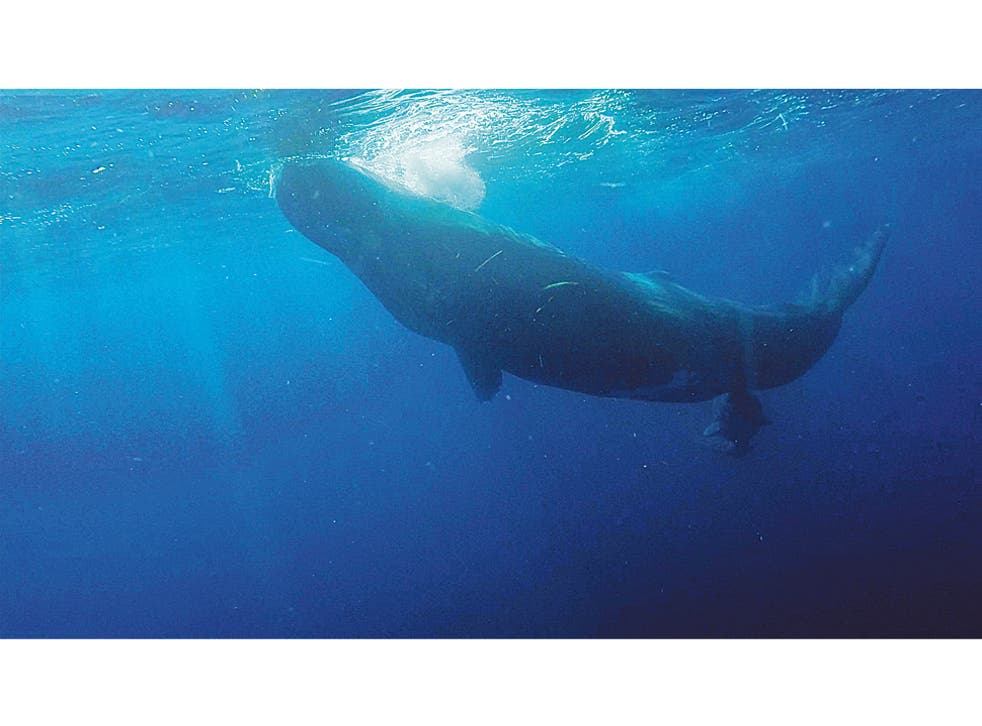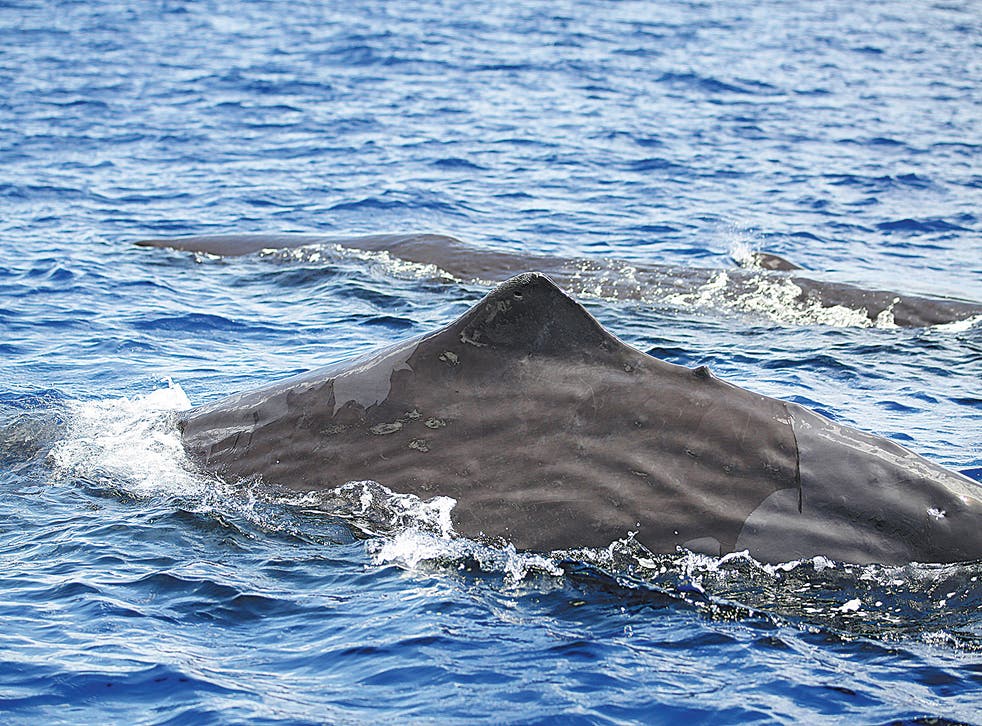A sperm whale can grow to more than 49 feet in length
In many ways, Li Songhai is the direct opposite of Captain Ahab, the vengeful captain in Herman Melville’s novel Moby Dick.
Unlike Ahab, who was obsessed with hunting a giant white sperm whale, Li is dedicated to studying and protecting these creatures in the South China Sea.
Li, a researcher at the Chinese Academy of Sciences’ Institute of Deep-Sea Science and Engineering, leads one of the country’s deep-sea marine mammal research teams. The team comprises about 20 people who, he says, are “physically, mentally and spiritually tested” by the harsh conditions for oceanic expeditions in the South China Sea.
Li’s team has found that there is a good chance that the South China Sea is a nursing ground for the endangered sperm whale, the largest toothed whale in the world, which can grow to more than 49 feet in length.
The team’s findings were published in the journal Deep Sea Research Part I: Oceanographic Research Papers in April, the first time it had featured a study by Chinese scientists on marine mammals.
Nine groups of sperm whales were sighted in northern areas of the South China Sea from 2019 to 2021
Studying sperm whales and other mammals in the South China Sea is of great scientific, ecological and strategic significance for China’s conservation, management and development of deep-sea biological resources in the region, Li said.
According to the team’s study, nine groups of sperm whales were sighted in northern areas of the South China Sea from 2019 to 2021. They were seen south-east of the island province of Hainan and north of the Xisha Islands. Each group comprised five to seven whales, and seven groups were found to be nursing one or two calves.
Throughout history there have been reports of stranded sperm whales sighted in China’s coastal provinces, Li said, but until now scientists have been unable to directly confirm that there are sperm whale populations in the country’s coastal waters.
“When I first saw a live sperm whale in the South China Sea in 2019 I couldn’t believe my eyes. The sight of a single whale is breathtaking enough, but several times we saw a mother whale swimming with her calf, accompanied by a group of Fraser’s dolphins. This was a sight to behold.”
While adult male sperm whales travel thousands of miles looking for food and mates, females with their calves do not follow suit. Coupled with the fact that the South China Sea has ample food sources for sperm whales, it is possible that it is also a key hunting and breeding ground for the creatures, Li said.
“As these whales are such an essential part of a healthy marine ecosystem, China may need to improve its policies related to marine ecological protection to shield these valuable creatures and other undersea resources from intrusive human activities.”
Such work includes enhancing marine biology research in the South China Sea and establishing a national marine protected area to safeguard waters around sperm whale nurseries, Li said, similar to marine protected areas in countries such as Australia, Brazil, Greece, the United Kingdom and the United States.
“For many countries, the sperm whale has been a flagship creature for marine research and a poster child for marine conservation,” Li said.
“This is because sperm whales are peaceful creatures that do not compete with humans for resources on land – yet they play a crucial role in the sustainability of the oceans that benefits all of us. This makes them truly altruistic friends of humankind.”
Previously published on Chinadaily.com.cn


No comments:
Post a Comment